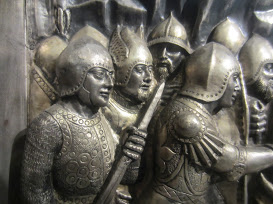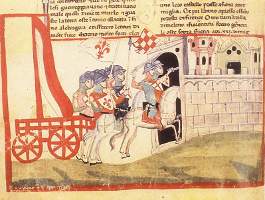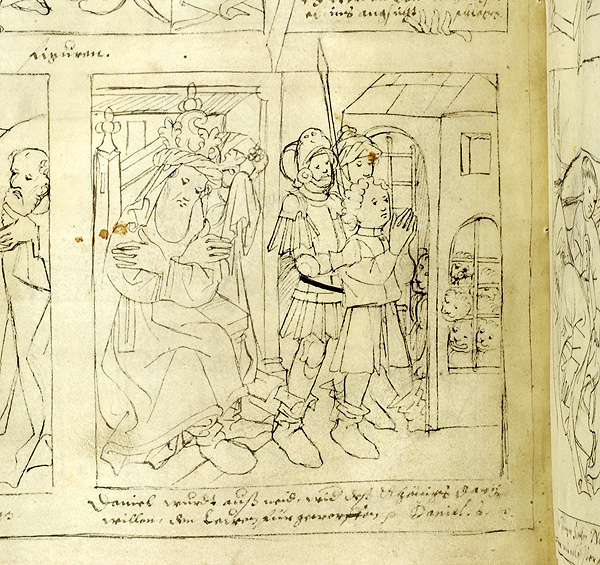-

warfare.tk & warfare.gq
My websites warfare.tk, warfare.gq, warfare.ga & warfare.cf are permanently down due to Freenom.com leaving the domain name business: The illustration and other resources are available at: warfare.ueuo.com warfarewest.x10host.com costume.myartsonline.com for Western Europe and Northwest Africa...- Druzhina
- Thread
- Replies: 0
- Forum: The Sage's Guild - Historical Discussion
-

Question about Balkan arms and armour in early medieval period
SLAV WARRIOR in Armies of the Dark Ages 600-1066 by Ian Heath
SLAV ARCHER in Armies of the Dark Ages 600-1066 by Ian Heath
10TH CENTURY SLAV CHIEFTAIN in Armies of the Dark Ages 600-1066 by Ian Heath
11TH CENTURY SLAV INFANTRYMEN in Armies of the Dark Ages 600-1066 by Ian Heath
Druzhina
Illustrations of Costume & Soldiers- Druzhina
- Post #4
- Forum: The Sage's Guild - Historical Discussion
-

Janissaries with huge plumes
Yes, I agree.
Druzhina- Druzhina
- Post #18
- Forum: The Sage's Guild - Historical Discussion
-

An Arab Chamfron in Scylitzes Chronicle?
Perhaps a poor black and white photo in a book or an even earlier woodcut or someone else's sketch. In the 2017 article he states (para. 30): "A number of medieval Islamic and Middle Eastern Christian illustrated sources show such a chamfron (figures 12), though the early medieval Egyptian example can be disputed (figure 25)". Figure 25 is St. Pteleme (Ptolomeus), Egypt, 9th century-early 10th century, Pierpont Morgan Library MS. M.581. But he does not express any doubts about the Scylitzes image. He gives many separate examples so he is not supplementing from another find.
Druzhina
Coptic Illustrations of Costume & Soldiers- Druzhina
- Post #4
- Forum: The Sage's Guild - Historical Discussion
-

An Arab Chamfron in Scylitzes Chronicle?
A drawing of an Arab cavalry horse with chamfron in Scylitzes Chronicle appeared as fig. 609I in David Nicolle's 1982 PHD thesis: "The military technology of classical Islam" It has appeared in subsequent publications and by other authors. It appears as follows in 'Horse Armour in the Medieval...- Druzhina
- Thread
- arab
- Replies: 4
- Forum: The Sage's Guild - Historical Discussion
-

7th century Scandinavian Guldgubber Warrior
Thanks- Druzhina
- Post #10
- Forum: The Sage's Guild - Historical Discussion
-

7th century Scandinavian Guldgubber Warrior
That's interesting. Does the article say what proportion of guldgubbers have high heels?
Druzhina
Illustrations of Costume & Soldiers- Druzhina
- Post #8
- Forum: The Sage's Guild - Historical Discussion
-

7th century Scandinavian Guldgubber Warrior
There is also something to fill up the space under his left elbow.
Druzhina
7th Century Illustrations of Costume & Soldiers- Druzhina
- Post #6
- Forum: The Sage's Guild - Historical Discussion
-

7th century Scandinavian Guldgubber Warrior
The "heels" may be background or sprues to make sure the metal flowed to all parts.
Druzhina
Illustrations of Costume & Soldiers- Druzhina
- Post #3
- Forum: The Sage's Guild - Historical Discussion
-

2 Jericho Plates from Central Asia
I was surprised to see a plate with the Jericho story from Semireçye in Central Asia found at Verkhne-Nildino was cast from the same mould as the plate with the Jericho story from Semireçye in Central Asia found at Anikovskoe. The gilding is different and there are major differences in the later...- Druzhina
- Thread
- Replies: 0
- Forum: The Sage's Guild - Historical Discussion
-

What's Ghulam and Ghilman? Tulag Explains
There are wall paintings of Ghilman from one of the Ghaznavid palaces at Laškari Bazar in central Afghanistan
A soft headdress at Laškari Bazar
A Ghaznavid Ghulam in Armies of the Dark Ages by Ian Heath based on the Laškari Bazar wall paintings
A Ghaznavid Bodyguard by Graham Turner based on the Laškari Bazar wall paintings
mirror site
wall paintings of Ghilman from one of the Ghaznavid palaces at Laškari Bazar in central Afghanistan
A soft headdress at Laškari Bazar
Ghaznavid Ghulam in Armies of the Dark Ages by Ian Heath based on the Laškari Bazar wall paintings
Ghaznavid Bodyguard by Graham Turner based on the Laškari Bazar wall paintings
Druzhina
Illustrations of Costume & Soldiers- Druzhina
- Post #8
- Forum: The Citadel - General Discussion
-

7th century Scandinavian Guldgubber Warrior
The 7th century Scandinavian Warrior in 'Armies of the Dark Ages 600-1066' by Ian Heath is probably based on a Guldgubber depicting a drinker with a cup without foot (and a spear?). Vendel period. Sorte Muld, Bornholm, Denmark. A Guldgubber (Gullgubber) [little old man of gold] is some kind of...- Druzhina
- Thread
- vendel
- Replies: 9
- Forum: The Sage's Guild - Historical Discussion
-

Janissaries with huge plumes
This is Sultan Suleiman during the Battle of Mohacs, 1526. Süleymanname of 1558, Topkapi Saray Museum ms Hazine 1517.
The black wings may be on the slung, blue shield with gold pattern of the cavalryman at top-left. His green robe can be seen to the left of the Janissary in red coat firing his musket. But, the wings may belong to that Janissary.
Druzhina
Illustrations of Costume & Soldiers- Druzhina
- Post #15
- Forum: The Sage's Guild - Historical Discussion
-

Earliest depiction of a Western-European kite shield
I have previously written that Ian Heath's idea that the kite-shaped shield was depicted in Europe for the first time in the 'Codex Aureus of Echternach', (The Gospel of Otto III). Germanisches Nationalmuseum in Nuremberg, Germany was based on a dating on the reused ivory cover as c. 983-991AD...- Druzhina
- Thread
- Replies: 0
- Forum: The Sage's Guild - Historical Discussion
-

Historical depictions of Kushans - Uzbekistan, Afghanistan and N.Indian Sub-cont
The Kushan Empire was formed by the Yuezhi (their Chinese name), in the Bactrian territories in the early 1st century. It spread to encompass much of Afghanistan, and then the northern parts of the Indian subcontinent at least as far as Saketa and Sarnath near Varanasi (Benares), where...- Druzhina
- Thread
- Replies: 0
- Forum: The Sage's Guild - Historical Discussion
-

Italian soldiers in Pistoia Cathedral, 1376AD
Regarding the epaulettes worn by some soldiers.

Similar epaulettes are portrayed in the Villani Chronicle, 1390s - Conquest of Carmignano

and in Paintings of Italian Soldiers by Niccolo di Giovanni Ventura, 1443 in La sconfitta di Montaperti, see page 18.

and in Biblia pauperum, Austria, 1435 - Morgan MS M.230 fol. 11v

Druzhina
14th Century Illustrations of Costume & Soldiers- Druzhina
- Post #6
- Forum: The Sage's Guild - Historical Discussion
-

Italian soldiers in Pistoia Cathedral, 1376AD
Terco_Viejo said:
Helmets of non-knights are unlikely to survive in a condition where flimsy decorations are preserved. Do you mean by "reference" a written description?
Why would wings on helmets be associated with Romans?
Druzhina
Illustrations of Costume & Soldiers
- Druzhina
- Post #4
- Forum: The Sage's Guild - Historical Discussion
-

Italian soldiers in Pistoia Cathedral, 1376AD
I have saved some photos by Hugh McDonald of Italian soldiers on panels from the side of the silver altar-piece in Pistoia Cathedral completed by Francesco di Niccolò and Leonardo di Ser Giovanni of Florence in 1376. panel 5, panel 6, panel 7 and panel 8. Google Plus is closing, so if you wish...- Druzhina
- Thread
- Replies: 7
- Forum: The Sage's Guild - Historical Discussion
-

Surviving illustrations on textiles from the 7th-8th centuries
Also of interest is that this

Coptic, Byzantine, Syrian or Arab Cavalryman on a Coptic Textile, Egypt, 7th century
has the same composition as this

Victorious Emperor, Coptic-Byzantine Ivory Relief, 7th century. The Walters Art Museum 71.1144
Druzhina
Byzantine Illustrations of Costume & Soldiers- Druzhina
- Post #2
- Forum: The Sage's Guild - Historical Discussion
-

Surviving illustrations on textiles from the 7th-8th centuries
I find it interesting that multiple examples of an illustration, on perishable material, can survive for over a thousand years. The most I have found is seven examples of horse-archers on silk: Arab, Syrian or Byzantine Horse Archer on a Coptic Textile, 7th century, Dumbarton Oaks Collection...- Druzhina
- Thread
- Replies: 3
- Forum: The Sage's Guild - Historical Discussion






